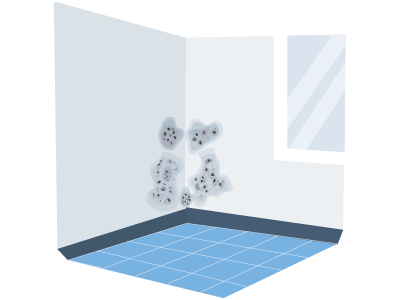What is Penetrating Damp?
- Penetrating damp is moisture moving through the exterior wall into the interior of a building, when the weather-proof outer skin becomes compromised, or material builds up against the outer wall.
- Damp can compromise the structural integrity of a building over time, and resulting mould threatens respiratory health. Early detection and professional treatment are vital.
- If you are buying a property with damp, a home survey will help to ascertain the costs involved in identifying and fixing the issue, so you can negotiate accordingly.
- Selling a property with penetrating damp can be challenging. You must disclose damp to your buyer, so be upfront, honest, and prepared to accept a reasonable reduction in price.
Beware the lurking threat of penetrating damp. This problem can turn your dream into a nightmare if not addressed properly. We'll run through the impact of damp on buyers; helping you to spot the signs, understand the potential costs, and protect your investment.
How serious is penetrating damp?
Penetrating damp is a serious issue that can cause significant damage to a property if left untreated. It's not just an aesthetic problem; it can lead to structural issues and health risks.
Structural damage
- Rotting timber: Damp conditions create the perfect environment for wet wood rot, which can weaken the property's structure.
- Deteriorating plaster: Constant moisture can cause plaster to crumble and fall off.
- Damaged masonry: Bricks and mortar can weaken, leading to cracks and instability.
Health risks
- Mould growth: Damp conditions promote the growth of mould, which can trigger allergies and respiratory problems.
- Increased condensation: Damp can contribute to condensation, leading to further mould growth.
Financial implications
- Reduced property value: Damp can significantly decrease a property's market value.
- Expensive repairs: Fixing the underlying cause and repairing the damage can be costly.
Destruction of possessions
- Damp and high moisture levels in your home can destroy precious personal belongings including wooden furniture, fabrics, soft furnishings, artwork or photographs, shoes, and clothing.
We can help with your damp survey
If you're buying with a mortgage, your lender may refuse to lend against a property with serious damp problems such as rising damp or penetrating damp. In this case, you'll have no choice but to pull out or find another lender.
Our house surveyors are RICS accredited, and our qualified damp surveyors are PCA registered (Property Care Association).
What causes penetrating damp?
Penetrating damp occurs when rainwater finds its way into a property through defects in the structure. It's essential to identify the specific cause of the damp to find a suitable solution. Common causes include:
- Roofing issues: Damaged tiles, broken slates, or blocked gutters can allow water to penetrate the roof and trickle down walls.
- Wall defects: Cracks in masonry, missing mortar, or porous bricks can let rainwater seep through.
- Window and door problems: Faulty seals, gaps around frames, or damaged glazing can allow water ingress.
- Ground level issues: Poor drainage or soil levels higher than the damp-proof course can contribute to damp.
- Plumbing leaks: Although less common, leaks in pipes or radiators can cause damp patches that mimic the appearance of penetrating damp.
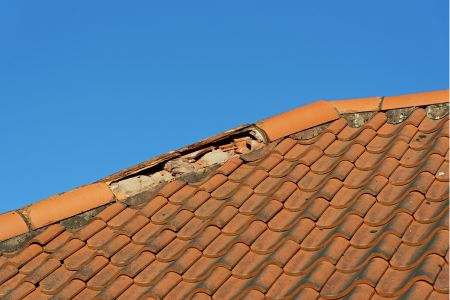
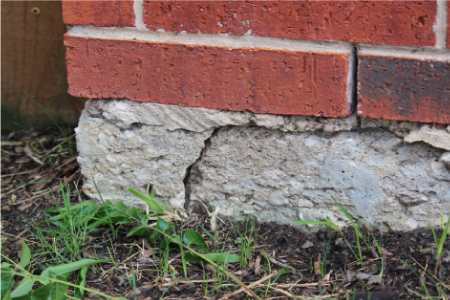
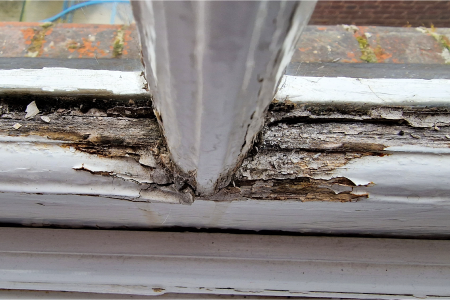
Buying a house with damp
Signs of penetrating damp
Identifying the signs of penetrating damp is the first step in protecting your property investment. If you notice any of the following, make sure you investigate it further:
- Damp patches: These often appear on internal walls, particularly in ground-floor rooms. They may be irregular in shape and size.
- Mould growth: Dark patches or black mould can thrive in damp conditions.
- Peeling or blistering paint: Moisture can cause paint to deteriorate.
- Salt deposits: White or powdery residue on walls.
- Rotting timber: Damp conditions can lead to wood decay, especially in skirting boards or floorboards.
- Musty smell: A damp or mouldy odour often accompanies damp.
How much does damp devalue a house?
This depends on the problem's extent and the damp type (condensation, penetrating damp, or rising damp). The latter is the most damaging. It can cause a property's value to drop by at least 10%.
Condensation can usually be resolved with better ventilation or insulation, as long as it hasn't caused a secondary issue like mould growth, it shouldn't affect the property value much. Penetrating damp can also reduce the value of a house by 10%.
Structural damage caused by damp can devalue the property by as much as half, and if left unchecked, the building can deteriorate so much that it has to be ripped down.
How much does a damp survey cost?
Our damp surveys range in cost from £264 INC VAT upwards, depending on the size of your property.
Costs of repairing penetrating damp
The cost of repairing penetrating damp can vary depending on the severity of the problem and the work involved. Factors such as the size of the affected area, the cause of the damp, and the chosen repair method will all influence the final price.
Here's a general breakdown of potential costs:
- Identifying the problem: A damp survey can range from £100 to £300.
- Repairs: This could include fixing damaged roofing, repairing gutters, or repointing brickwork. Costs can vary widely depending on the extent of the work but might set you back a few hundred to several thousand pounds.
- Internal repairs: If damp has caused damage to plaster, floors, or walls, the cost of redecoration will add to the overall expense.
It's important to obtain multiple quotes from different contractors to compare prices and ensure you're getting a fair deal in negotiations with the seller. While it can be tempting to tackle the problem yourself, it's often advisable to hire a professional to diagnose and rectify the issue.
In our recent survey, 16% of homeowners found defects; including 2% who were able to pull out of a bad purchase, 7% who were able to negotiate a better price, and sadly, 7% of homeowners who did not get a survey and discovered defects after the purchase.
12 of the 39 who remembered how much these defects cost to remedy spent over £5,000
Don't burn your money, book a survey.

Negotiating a lower price
Discovering any damp during a property survey can be disheartening, but it doesn't necessarily mean you have to walk away from the deal. With careful negotiation, you may be able to secure a lower purchase price that takes into account all the contractor work.
It's essential to remain calm and professional during negotiations. By approaching the situation with a clear head, you can increase your chances of reaching a mutual agreement.
Here are some tips:
- Gather evidence: Collect as much information as possible about the damp issue, including photographs and quotes for potential repairs. Your survey report and damp and timber survey report are crucial evidence and you can use these findings to highlight any anticipated costs.
- Assess the severity: Consider the extent of the damp and the potential cost of remediation. You could even bring a contractor to a viewing to provide an estimate for works.
- Make a counteroffer: Based on the estimated repair costs, propose a reasonable reduced offer to the seller.
- Be prepared to walk away: If the seller is unwilling to negotiate, you may need to consider other properties.
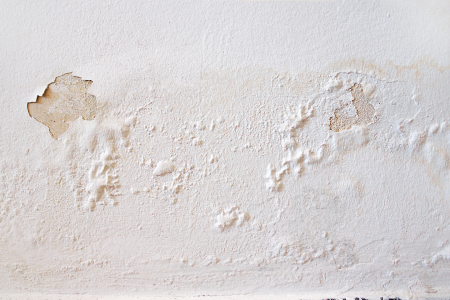
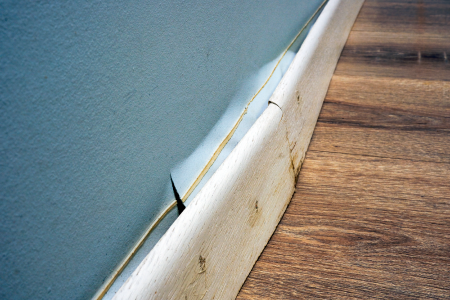
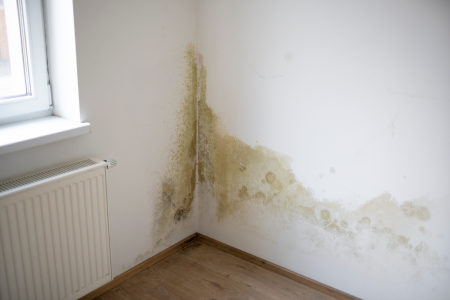
Protecting yourself as a buyer
Purchasing a property with potential damp issues can be stressful, but with the right precautions, you can protect your investment.
- Get a comprehensive building survey: This detailed inspection will highlight any existing or potential problems, including damp.
- Seek legal advice: If you're unsure about your rights or the terms of the sale, consult a solicitor.
- Don't rely on insurance: Most insurers won't cover damp which is why it's essential to check thoroughly and negotiate the purchase price down to compensate for an accurate estimation of repair costs.
Is penetrating damp a deal-breaker?
Penetrating damp can be alarming, but it doesn't necessarily have to be a deal-breaker. As a buyer, you need to fully understand the extent of the problem and research your rights.
With careful negotiation and appropriate precautions, it's possible to purchase a property with damp and successfully address the problem.
Selling a property with damp
If you're actively trying to sell a house with penetrating damp, by adopting a transparent and proactive approach, you avoid wasting your own time when the buyer inevitably finds out at the survey stage and pulls out because they cannot trust you.
Disclosure: Be upfront about the damp issue with potential buyers. Talking about the problem honestly can build trust and avoid legal complications later. You are legally obligated as a seller to inform the buyer of damp in the TA6 form or you could be sued for compensation.
Professional assessment: Get a damp report from a qualified surveyor to accurately assess the extent of the problem. This report can be shared with buyers.
Pricing strategy: It's often better to price the property competitively to attract buyers who are willing to take on the challenge.
Repairs: Consider carrying out repairs. However, compare a quote for the work against your estate agent's estimated potential increase in property value.
Clear photography: This will normally be handled by your estate agent, if you are selling the property privately, present the property honestly in photographs, ensuring that damp areas are visible but not overly emphasised.
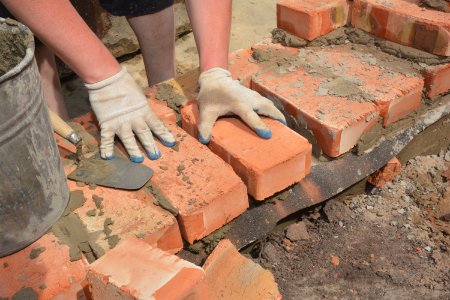
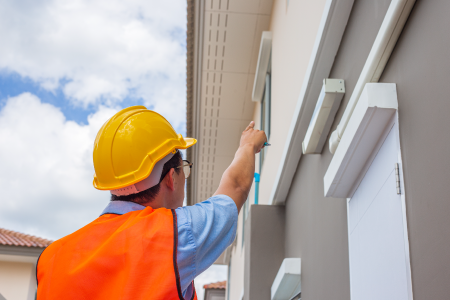
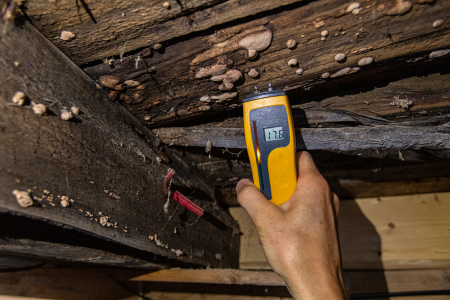
How can you treat penetrating damp?
Common treatment methods
- Roof repairs: Replacing damaged tiles, repairing gutters, and clearing blockages to prevent water ingress.
- Ground level issues: Installing a new drain around the foundation to divert water away from the building, potentially a new damp-proof course.
- Wall treatments: Applying water-repellent coatings to external walls can help protect against moisture penetration. In severe cases, repointing or replacing damaged masonry may be necessary.
- Windows and doors: Replacing old or damaged seals and applying a high-quality caulk around the window or door frame to seal any gaps. If window glazing is damaged, new glass might be required.
- Internal repairs: This involves addressing the consequences of damp, such as removing affected plaster, treating mould, and redecorating.
- Plumbing repairs: Fixing leaks promptly is crucial to preventing damp issues.
Remember: You should obtain multiple quotes from qualified professionals to compare prices and ensure you're getting a fair deal. While DIY solutions might seem tempting, hiring experts for damp treatments can often save money in the long run by addressing the root cause effectively.
Resolve your damp issues now for a smoother sale and better price
Our damp and timber survey will assess the extent of the problem, identify the cause(s) and recommend how to fix it, with an estimate of costs. You can weigh up your options and fix it up to achieve the best possible price or adjust your asking price accordingly for a quick sale.
Take advantage of our fixed fees, same-week availability* and our access arrangements.
Jack is our resident Content Writer with a wealth of experience in Marketing, Content, and Film. If you need anything written or proof-read at a rapid speed and high quality, he's your guy.
Caragh is an excellent writer and copy editor of books, news articles and editorials. She has written extensively for SAM for a variety of conveyancing, survey, property law and mortgage-related articles.

